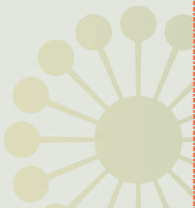I
TOLD YOU SO!
January, 2012
In 1898 Morgan Robertson published his short novel, Futility,
about an ocean liner named the Titan that crossed the Atlantic
in April, collided with an iceberg and, because of the shortage of
lifeboats, resulted in the deaths of many passengers. Fourteen years
later, in April, 1912, the Titanic sank under the same circumstances.
There were so many other similarities between fiction and reality
as to raise the question about the meaning of reality and the nature
of premonitions. Indeed, Ian Stevenson recorded nineteen incidents
of premonitions that had occurred to persons within two weeks before
the Titanic disaster. (see also Transcending the Titanic: Beyond
Death's Door by Michael
Tymn.)
Whether it’s Julius Caesar’s wife or Abraham Lincoln
or Adolph Hitler or Nostradamus, history is replete with accounts
of advance warning of impending disaster. So widely accepted was
the belief that persons can and do have foresight into events of
a cataclysmic and traumatic nature that after the Aberfan Coal Disaster
in Wales in 1966, the British Premonitions Bureau was formed. Similarly,
a Central Premonitions Registry was created in New York. The purpose
of both was to register the premonitions and precognitions of persons
so as to discern a pattern and therefore create an advance warning
network. It did not work as well as it was hoped since many people
reported their dreams after the event, or because they were so personal
and trivial as to be meaningless in a larger context.
While premonitions and precognitions are similar in that they give
an indication of a future event, there are differences. Premonitions
(Latin – praemon?re “to warn before”) are
more likely to be feelings, such as depression and uneasiness, about
a future occurrence. Precognition is foreknowledge and is primarily
a mental construct.
Bonnie McEneaney, in her book Messages: Signs, Visits and Premonitions
from Loved Ones Lost on 9/11, has collected sufficient anecdotal
information from the survivors of those who perished in the World
Trade Center disaster to validate the belief that there is a connection
between persons that transcends this life. While McEneaney records
observations of signs and portents that lead the survivors to believe
that their loved ones still exist in some form, it is the detailing
of the premonitions that is most interesting. In many cases it was
not specific insight, but rather a sense of foreboding. In one case
it was sufficient for one person, on his way to work, to turn
around in Grand Central Station and arrive back home in time to see
the collapse of the South Tower.
Several years ago I visited the aesclepeion at Epidaurus where patients
were placed in a drug-induced sleep known as "enkoimesis,” while
snakes, sacred to the god Aesclepius, slithered around them. When
they awoke, they told their dreams to the priest-physicians who then
prescribed the remedy for their ailments. Occasionally the dreams
foretold other events in the lives of the percipients. Whether it
was dream interpretation in ancient Egypt or Vision Quests in the
sweat lodges of Native Americans, it is part of the human experience
to seek and accept that which comes from beyond the dimension of
sight and sound.
The nature of premonitions and precognition is under continuous scrutiny
and I will leave it to scientists like Dale Graff to present a more
detailed analysis of the phenomenon. Whether it is an aberration
of the mind, or a warp in the space-time continuum, or a disturbance
in the Force or Collective Unconscious remains to be seen. But it
is not something to be ignored. When humans were more intuitive than
empirical our perspective on existence was not so limited. We will
continue to be amazed at how humans process eternity.
Dr. Harry L. Serio
|
